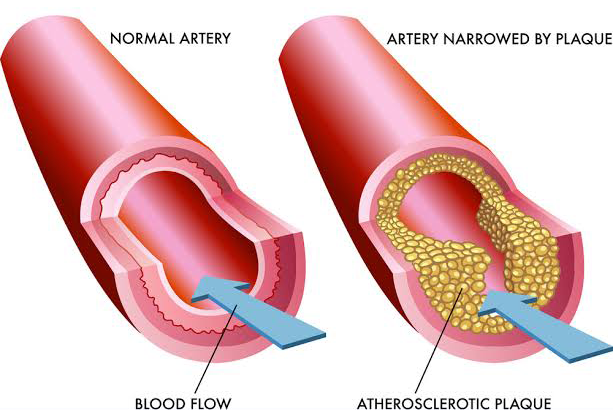Atherosclerosis
Home » Atherosclerosis

Atherosclerosis is a disease in which plaque is formed inside your arteries. Arteries are blood vessels that carry oxygen-rich blood to the heart and other parts of the body.
Plaque consists of fat, cholesterol, calcium and other substances found in the blood. Over time, the plaque hardens and narrows the arteries. This restricts the flow of oxygen-rich blood to your organs and other parts of your body.
Atherosclerosis may lead to serious problems, including a heart attack, stroke, or even death. The exact cause of atherosclerosis is not known. Studies, however, show that atherosclerosis is a slow, complex disease that can begin in childhood. It’s growing faster as you age.
Causes:
Atherosclerosis may start when certain factors damage the inner layers of the arteries. These factors include:
- Smoking
- High amounts of fats and cholesterol in the blood
- High blood pressure
- High amounts of sugar in the blood.
Plaque may begin to build up where the arteries have been damaged. Over time, the plate hardens and narrows the arteries. Eventually, the area of the plate may rupture (break open).
Signs, Symptoms, and Complications
Atherosclerosis usually does not cause signs and symptoms until the artery is severely narrowed or completely blocked. Many people don’t know that they have a disease until they have a medical emergency, such as a heart attack or stroke.
Some people may have signs and symptoms of illness. Signs and symptoms depend on which arteries are affected.
Treatment
Treatments for atherosclerosis may include changes in heart-healthy lifestyles, medicines, and medical procedures or surgery. The treatment objectives include:
- Lowering the risk of blood clots forming
- Preventing atherosclerosis-related diseases
- Reducing risk factors in an effort to slow or stop the buildup of plaque
- Relieving symptoms
- Widening or bypassing plaque-clogged arteries

